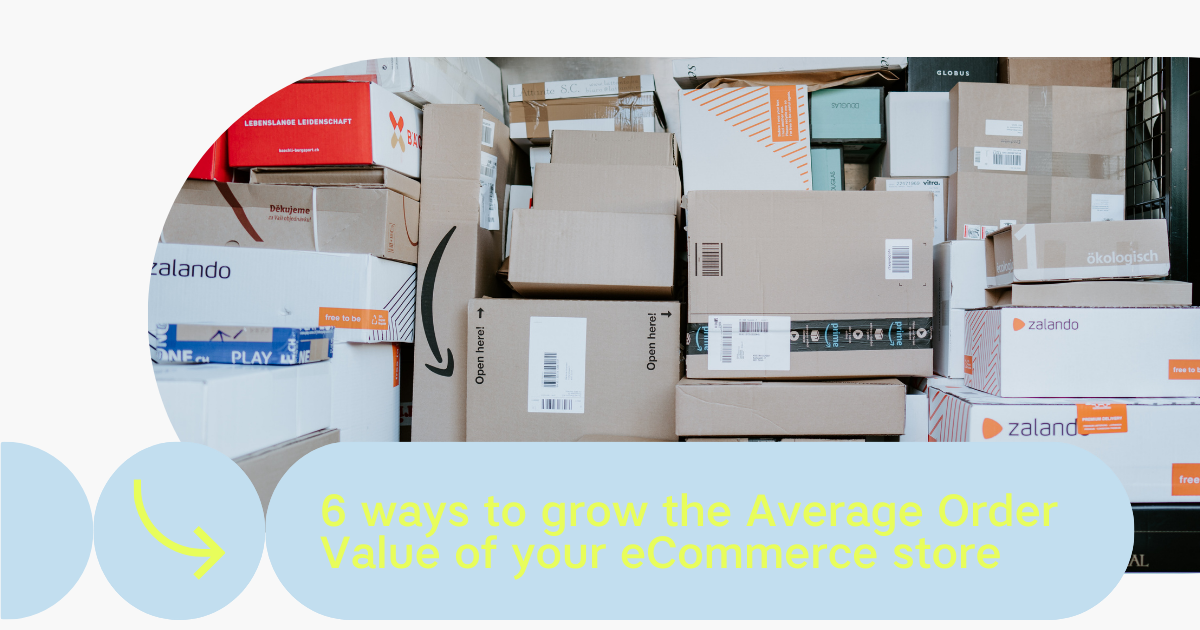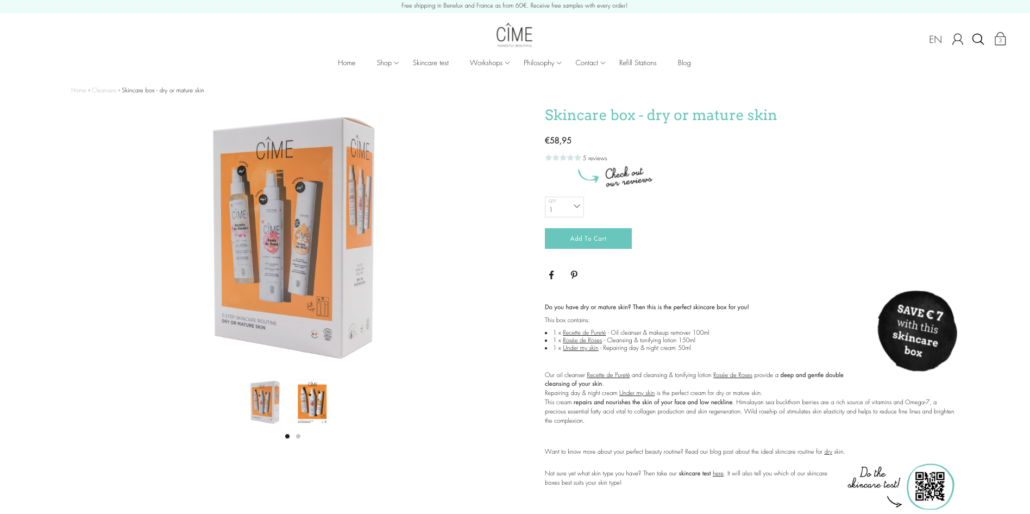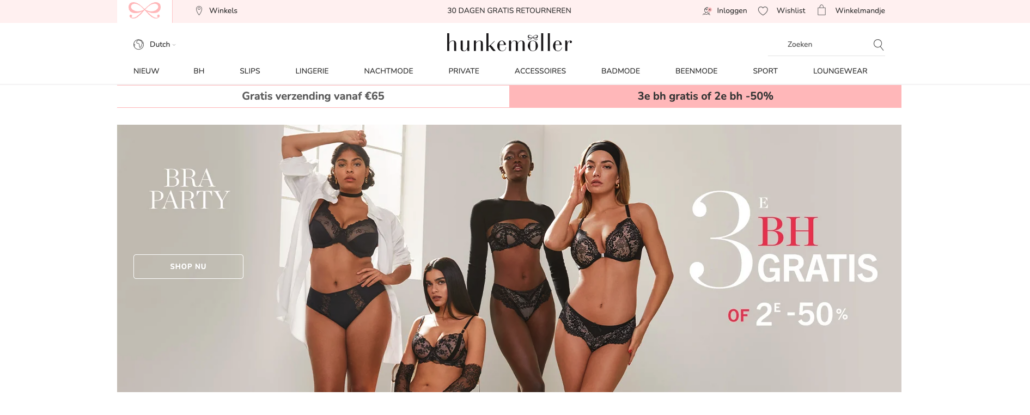1. What is average order value?
You have your own online store and generate a high amount of website traffic, a good conversion rate, and a strong revenue stream. You might now be quick to say that these are the most important metrics to measure the success of your online store. But not so fast! There is another very essential metric to monitor as you grow your online business.
This other important metric is the average order value (AOV). Average order value (AOV) measures the average euro amount spent every time a customer buys something on your website. To calculate your website’s AOV, simply divide total revenue by the total number of orders.
Let’s take a look at a simple example: if your online business has a revenue of €3.000 split between 100 orders, your average order value is €30. In other words, a customer coming to your website spends €30 on average when they purchase something.
But why is average order value so important?
-
- Higher profits: every euro you increase your average order value by is basically pure profit when assuming that your expenses remain fairly constant.
- Higher inventory churn: selling more inventory faster is always good for business. You want a healthy flow of products to keep your inventory from piling up
- Faster profitability: if you have business debts, or spent heavily on a marketing campaign, you’ll reach a positive return on investment much faster with a higher AOV.
- Valuable insights: AOV provides you with critical insights into the behavior and buying patterns of your customers.
2. 6 ways to increase your average order value
Create an order minimum for free shipping & other gifts
Free shipping is a commonplace but still a highly effective way to get customers to spend more. So instead of offering free shipping to all your customers, offer it only for order sizes above a certain value. Here it is best to set that amount above your average order value. Consider what you expect to pay for free shipping, and set the baseline value above that extra amount.
For example, suppose your average order size is €40, and shipping costs are around €5. Offer to make your shipping free for all orders above €55. With that, you will motivate some people to spend a little more to get over that hump, and you’ll still be increasing profits even after having to pay for free shipping. Here, however, it is important to follow up on your abandoned carts properly after setting a minimum order value for free shipping.
TIP: Use a promotion bar on your website where you make it obvious that you are offering a minimum order incentive. Also mention the minimum order value for free shipping in the product pages and on the checkout page.
Bundle products or create packages
If you want customers to purchase more items, try creating product bundles that cost less than if the same items were purchased individually.
The customer is getting a deal, and you’re making a bigger sale and moving more inventory.
There are different approaches to bundling products:
- One great approach is to offer a package of products that create the all-in-one solution for the desired experience. Here, the skincare boxes from organic skincare brand CÎME are a very good example. They offer a total package of three skincare products to treat dry skin, combination or oily skin, or sensitive skin. When buying a skincare box you save €7.
- You can also empower customers to create their own bundles by allowing custom products or packages that let them choose which features or add-ons they want in their order.
- Bundle products you know people often buy more than one piece at a time. You can do this for example in a buy one, get the second one for free formula. A good example here is Hunkemöller with their buy two bras and get the third one for free.
If you are interested in adding product bundles to your store, you can check out a range of bundling apps for Shopify here and for WooCommerce here.
Upsell or cross-sell in effective ways
It’s all about nudging the customers to buy complementary products (=cross-selling) or upgraded versions (= upselling) of the products they already intend to purchase. The best strategy is to capitalize on the positive experience your customer had, and get them to spend a little more on something else.
Here are some key points to consider when setting up your upselling or cross-selling strategy:
- Don’t cross-sell too much, recommend as a friend would. It’s important that your cross-sells feel helpful and genuine. Instead of simply suggesting other popular products from your store, wisely choose some products that fit perfectly with the item in your customer’s cart, such as accessories or additional items. For example, when purchasing a plant, you might offer a pot in which the plant the customer wants to purchase would fit.
- Offer low-value products when cross-selling to increase the likelihood of purchase. If someone is purchasing a product of €50-€100, it’s hard to convince them to purchase another €100. However, it would be much easier to cross-sell a product of €20 that complements their purchase.
- Offer post-purchase cross-sells; if you are worried about affecting your conversion rate when bundling products, you could always test by implementing post-purchase cross-sells first. By doing this, you can use this data to inform you which products are being bought together and then create a bundle pre-purchase for the same product.
Yet again, Shopify and WooCommerce have some interesting apps available to implement your upsell and cross-selling strategy smoothly.
Loyalty program
Do you sell consumable products – something customers need to repurchase, like skincare, granola, or something else? Then it might be a good idea to set up a loyalty program.
A customer loyalty program enables customer retention and helps you forge relationships with your customers and increase the customer lifetime value.
When the customer has an advantage by earning points through your loyalty program, the average order value might increase significantly.
Want to learn more about loyalty programs? Read our previous article about the importance of a loyalty program for your online business.
Flexible return policy
73% of shoppers say that their returns experience affects how likely they are to buy from a retailer again (UPS survey from 2019). This emphasizes that now more than ever, it’s important to be both as transparent and as flexible as possible with your customers. By creating a flexible return policy you might help ease any anxieties or hesitances that potential customers may have about making a purchase from you.
It’s also important to display your return policy in a clear way to your customers. Communicate your return policy on your website banners, product pages, your own social media accounts, and your purchase confirmation emails.
Limited time offers
Urgency can spark the need to add more items to your cart. No one wants to miss out on a great deal. A best practice here is to offer short-term discounts or a free gift with a 24-72 hour window to increase your average order value. Here a small note that this increase in average order value is likely to be rather short term.
Are you curious about rolling out one or more of these strategies to increase your average order value after reading this article? But don’t know where to start? Then don’t hesitate to contact The Dotters so we can guide you in growing your online business!
This post is also available in: Dutch






